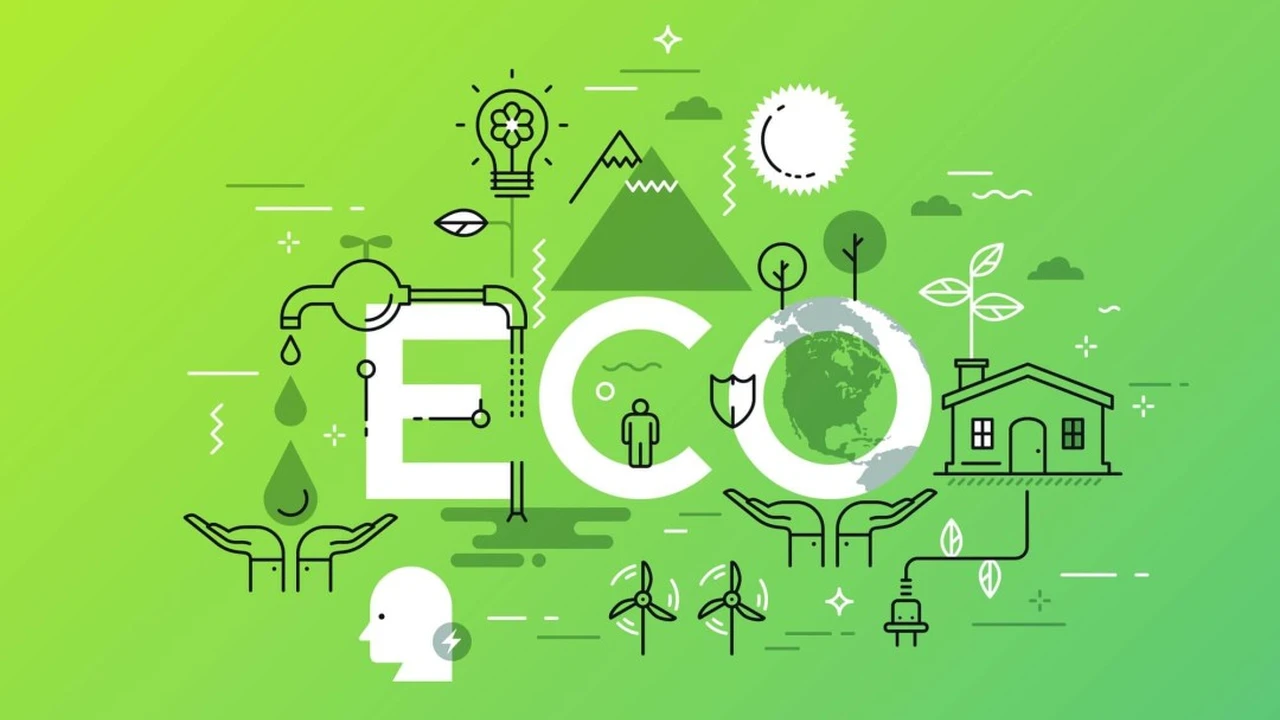Sustainable E-commerce Practices in SEA & Mexico: A Growing Demand
Sample meta description.

Introduction The Rise of Eco-Conscious Consumers in Southeast Asia & Mexico
Hey there! Ever noticed how more and more people are talking about sustainability? It's not just a buzzword anymore; it's a real movement, especially in Southeast Asia (SEA) and Mexico. These regions are seeing a surge in eco-conscious consumers who are actively looking for sustainable options in their online shopping. They're not just buying stuff; they're buying into a better future. This article dives deep into this trend, exploring what's driving it and how e-commerce businesses can adapt to thrive.
Understanding Sustainable E-commerce What Does It Really Mean for SEA & Mexico?
Okay, so what does "sustainable e-commerce" even mean? It's more than just using recycled packaging (though that's definitely part of it!). It's about considering the entire lifecycle of a product, from sourcing raw materials to how it's shipped and eventually disposed of. Think ethical sourcing, eco-friendly packaging, reduced carbon footprint in logistics, and products designed for durability and recyclability. In SEA and Mexico, where environmental concerns are growing, this holistic approach is becoming increasingly important to consumers.
Key Drivers Fueling the Demand for Sustainable E-commerce in SEA & Mexico Consumer Awareness & Environmental Concerns
Why the sudden boom in demand? Well, people are becoming more aware of the environmental impact of their purchases. Documentaries, social media campaigns, and increased media coverage are all playing a role in educating consumers about issues like pollution, deforestation, and climate change. They're realizing that their shopping choices can make a difference. This heightened awareness is driving a shift towards brands and products that align with their values.
Government Regulations & Initiatives Promoting Green Practices E-commerce Sustainability Policies
Governments in SEA and Mexico are also stepping up their game. They're introducing regulations and initiatives to encourage sustainable practices in the e-commerce sector. This includes things like incentives for businesses that adopt eco-friendly packaging, stricter regulations on waste management, and public awareness campaigns promoting sustainable consumption. These policies are creating a level playing field and pushing businesses to prioritize sustainability.
The Power of Social Media & Influencer Marketing Driving Sustainable E-commerce Engagement
Let's not forget the power of social media! Influencers and online communities are playing a huge role in shaping consumer preferences. They're showcasing sustainable products, promoting eco-friendly brands, and raising awareness about environmental issues. This peer-to-peer influence is incredibly effective in driving demand for sustainable e-commerce. Think of it as a digital ripple effect, spreading awareness and inspiring others to make conscious choices.
Sustainable E-commerce Practices That Resonate with Consumers in SEA & Mexico Eco-Friendly Packaging Solutions for E-commerce
Alright, let's get practical. What specific practices are resonating with consumers in SEA and Mexico? Eco-friendly packaging is a big one. Think biodegradable materials, recycled cardboard, and minimal packaging. Consumers appreciate brands that are actively trying to reduce waste. Using plantable packaging or offering packaging take-back programs are also great ways to stand out.
Ethical Sourcing & Fair Trade Practices in Online Retail Sustainability
Ethical sourcing and fair trade practices are also crucial. Consumers want to know that the products they're buying are made in a way that respects human rights and protects the environment. Transparency is key here. Brands that can demonstrate their commitment to ethical sourcing and fair labor practices will build trust and loyalty with consumers.
Carbon-Neutral Shipping & Logistics Sustainable E-commerce Delivery Options
Shipping is a major contributor to carbon emissions, so finding ways to reduce the carbon footprint of logistics is essential. This could involve using electric vehicles for deliveries, optimizing delivery routes to minimize travel distance, or partnering with carbon offset programs. Offering consumers the option to choose slower, more eco-friendly shipping options is also a good idea.
Product Durability & Repairability Reducing Waste in Online Retail
Designing products for durability and repairability is another important aspect of sustainable e-commerce. Instead of creating products that are designed to be replaced quickly, brands should focus on creating products that are built to last. Offering repair services or providing spare parts can also extend the lifespan of products and reduce waste.
Recommended Sustainable Products & Their Applications in SEA & Mexico Specific Examples & Use Cases
Okay, time for some specific product recommendations! These are examples of sustainable products that are gaining popularity in SEA and Mexico, along with their use cases and comparisons:
Bamboo Toothbrushes & Personal Care Products Sustainable Hygiene Options
Product: Bamboo Toothbrushes from brands like "The Bamboo Brush Society" and "Brush with Bamboo".
Use Case: Replacing traditional plastic toothbrushes.
Comparison: Bamboo toothbrushes are biodegradable, unlike plastic toothbrushes that end up in landfills for hundreds of years. The bristles are often made from bio-based nylon or boar hair. Plastic toothbrushes cost around $2-$5, while bamboo toothbrushes typically range from $3-$7.
Pricing: $3 - $7 per toothbrush.
Reusable Shopping Bags & Produce Bags Reducing Plastic Waste
Product: Reusable shopping bags made from organic cotton or recycled materials from brands like "Baggu" and local artisans in SEA and Mexico.
Use Case: Replacing single-use plastic shopping bags at grocery stores and markets.
Comparison: Plastic bags are a major source of pollution, while reusable bags can be used hundreds of times. They are also more durable and can carry heavier loads. Plastic bags are "free" at the point of purchase (though factored into overall pricing), while reusable bags cost $5-$20, but offer long-term savings and environmental benefits.
Pricing: $5 - $20 per bag.
Eco-Friendly Cleaning Products Sustainable Home Care Solutions
Product: Concentrated cleaning solutions from brands like "Blueland" (available internationally) or locally sourced, plant-based cleaners in SEA and Mexico.
Use Case: Replacing traditional cleaning products that contain harsh chemicals.
Comparison: Traditional cleaners often contain harmful chemicals that can pollute waterways and harm human health. Eco-friendly cleaners are made from plant-based ingredients and are biodegradable. Traditional cleaners can be cheaper, but the environmental and health costs are significant. Refillable options reduce plastic waste. Starter kits with reusable bottles cost $10-$30, while refills are typically $2-$5.
Pricing: Starter kits $10-$30, Refills $2-$5.
Solar-Powered Chargers & Gadgets Sustainable Energy Solutions
Product: Solar-powered chargers for phones and other devices from brands like "Goal Zero" or smaller, portable solar panels.
Use Case: Charging electronic devices using renewable energy.
Comparison: Traditional chargers rely on electricity generated from fossil fuels. Solar chargers offer a clean, renewable energy source. While the initial cost is higher ($20-$100+), they can save money on electricity bills and reduce carbon emissions. Ideal for outdoor activities and areas with limited access to electricity.
Pricing: $20 - $100+ depending on size and capacity.
Upcycled Clothing & Accessories Sustainable Fashion Choices
Product: Clothing and accessories made from upcycled materials from brands like "Patagonia Worn Wear" or local designers in SEA and Mexico who specialize in repurposing textiles.
Use Case: Reducing textile waste and promoting sustainable fashion.
Comparison: Traditional clothing production is a major polluter, consuming vast amounts of water and energy. Upcycled clothing gives new life to discarded materials. Pricing varies greatly depending on the brand and the complexity of the design, but often comparable to mid-range fast fashion brands, but with a significantly smaller environmental impact. Expect to pay $30+ for a t-shirt and $80+ for jeans.
Pricing: Varies, but generally $30+ for t-shirts and $80+ for jeans.
Marketing & Communication Strategies for Sustainable E-commerce Build Trust & Engage Consumers
Okay, you've got the sustainable products, but how do you market them effectively? Transparency is key. Be honest about your sustainability efforts, both the successes and the challenges. Don't be afraid to share your supply chain information and explain how you're working to reduce your environmental impact. Authenticity resonates with consumers.
Highlighting Sustainability Credentials & Certifications Gain Consumer Confidence
Certifications like Fair Trade, B Corp, and organic certifications can help build trust with consumers. These certifications provide independent verification of your sustainability claims. Displaying these certifications prominently on your website and product pages can give consumers confidence that you're walking the walk.
Storytelling & Emotional Connection Engage Customers with Your Sustainability Journey
Don't just tell consumers about your sustainability efforts; tell them a story. Share the stories of the people behind your products, the communities you're supporting, and the environmental impact you're making. Emotional connection is a powerful tool for building brand loyalty.
Consumer Education & Awareness Campaigns Promote Sustainable Consumption
Use your platform to educate consumers about sustainable consumption. Share tips on how to reduce waste, recycle properly, and make informed purchasing decisions. By empowering consumers with knowledge, you can help them make a positive impact.
Challenges & Opportunities in Sustainable E-commerce in SEA & Mexico Navigating the Landscape
Of course, there are challenges to sustainable e-commerce. Higher costs for sustainable materials and packaging can be a barrier for some businesses. Supply chain complexities can also make it difficult to ensure ethical sourcing and sustainable production. However, these challenges also present opportunities for innovation and differentiation.
Overcoming Cost Barriers & Scaling Sustainable Practices E-commerce Efficiency
Finding ways to reduce costs and scale sustainable practices is crucial. This could involve working with suppliers to negotiate better prices for sustainable materials, investing in more efficient production processes, or leveraging technology to optimize logistics. Government incentives and tax breaks can also help offset the costs of sustainability.
Ensuring Transparency & Traceability in the Supply Chain Verifying Sustainability Claims
Transparency and traceability are essential for building trust with consumers. This requires mapping your entire supply chain and verifying the sustainability claims of your suppliers. Technology like blockchain can be used to track products from origin to consumer, providing greater transparency and accountability.
Future Trends in Sustainable E-commerce in SEA & Mexico What's Next?
So, what's on the horizon for sustainable e-commerce in SEA and Mexico? We can expect to see even greater demand for sustainable products, driven by increasing consumer awareness and government regulations. Technology will play an increasingly important role in enabling transparency and traceability in the supply chain. And we'll likely see more innovative business models emerge, such as circular economy models that emphasize reuse, repair, and recycling.
The Circular Economy & E-commerce Rethinking Consumption Models
The circular economy is a model that aims to eliminate waste and pollution by keeping products and materials in use for as long as possible. This involves designing products for durability and repairability, offering repair services and spare parts, and creating systems for collecting and recycling products at the end of their life. E-commerce businesses can play a key role in promoting the circular economy by offering refurbished products, implementing take-back programs, and partnering with recycling facilities.
Technology & Innovation Driving Sustainable E-commerce Solutions
Technology is a powerful enabler of sustainable e-commerce. AI can be used to optimize logistics and reduce carbon emissions. Blockchain can be used to track products from origin to consumer, providing greater transparency and accountability. And 3D printing can be used to create customized products on demand, reducing waste and transportation costs.
The Role of Collaboration & Partnerships in Promoting Sustainable E-commerce Collective Action for a Better Future
No single business can solve the challenges of sustainability alone. Collaboration and partnerships are essential for driving meaningful change. This could involve working with suppliers, competitors, NGOs, and government agencies to develop sustainable solutions. By working together, we can create a more sustainable future for e-commerce in SEA and Mexico.
:max_bytes(150000):strip_icc()/277019-baked-pork-chops-with-cream-of-mushroom-soup-DDMFS-beauty-4x3-BG-7505-5762b731cf30447d9cbbbbbf387beafa.jpg)






